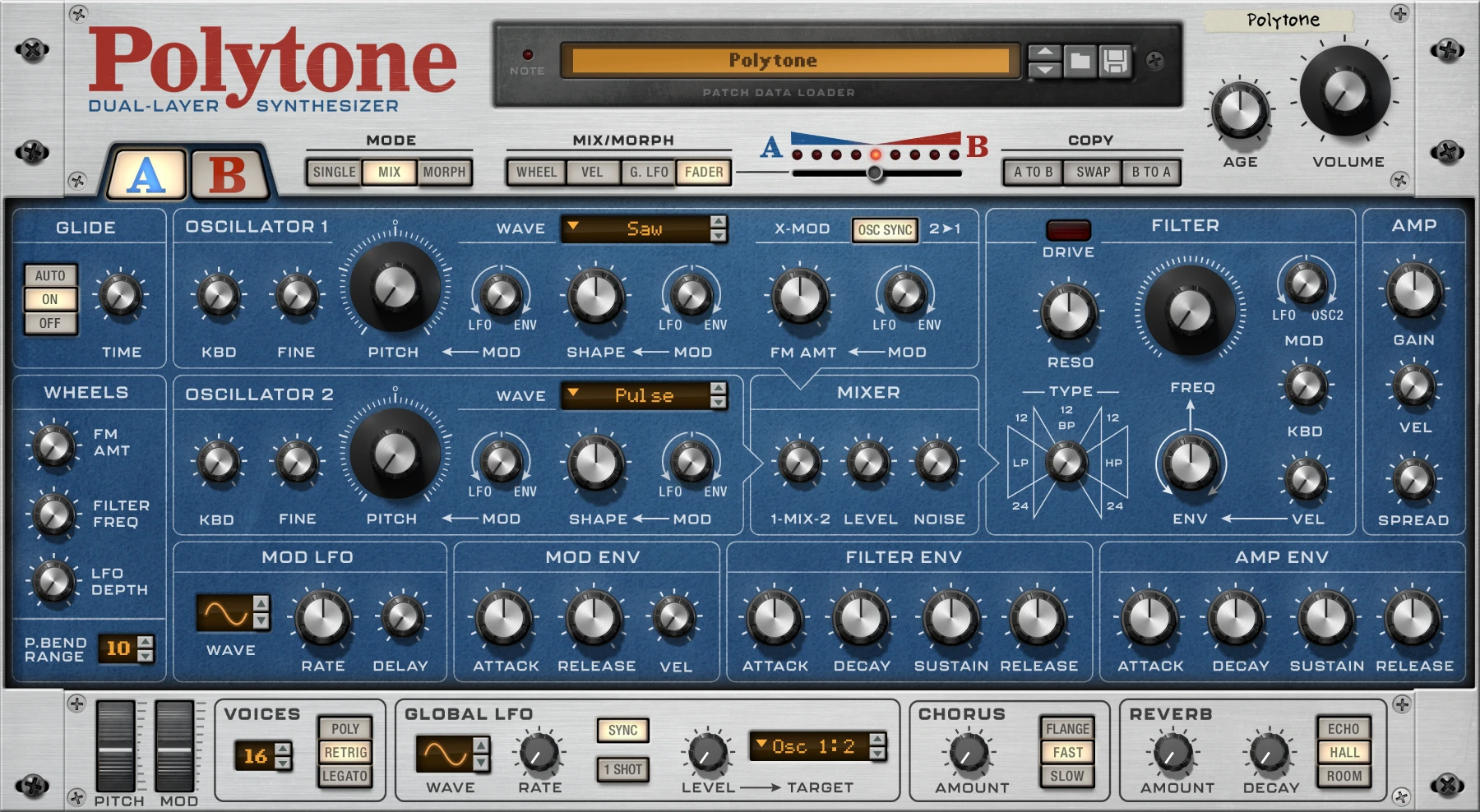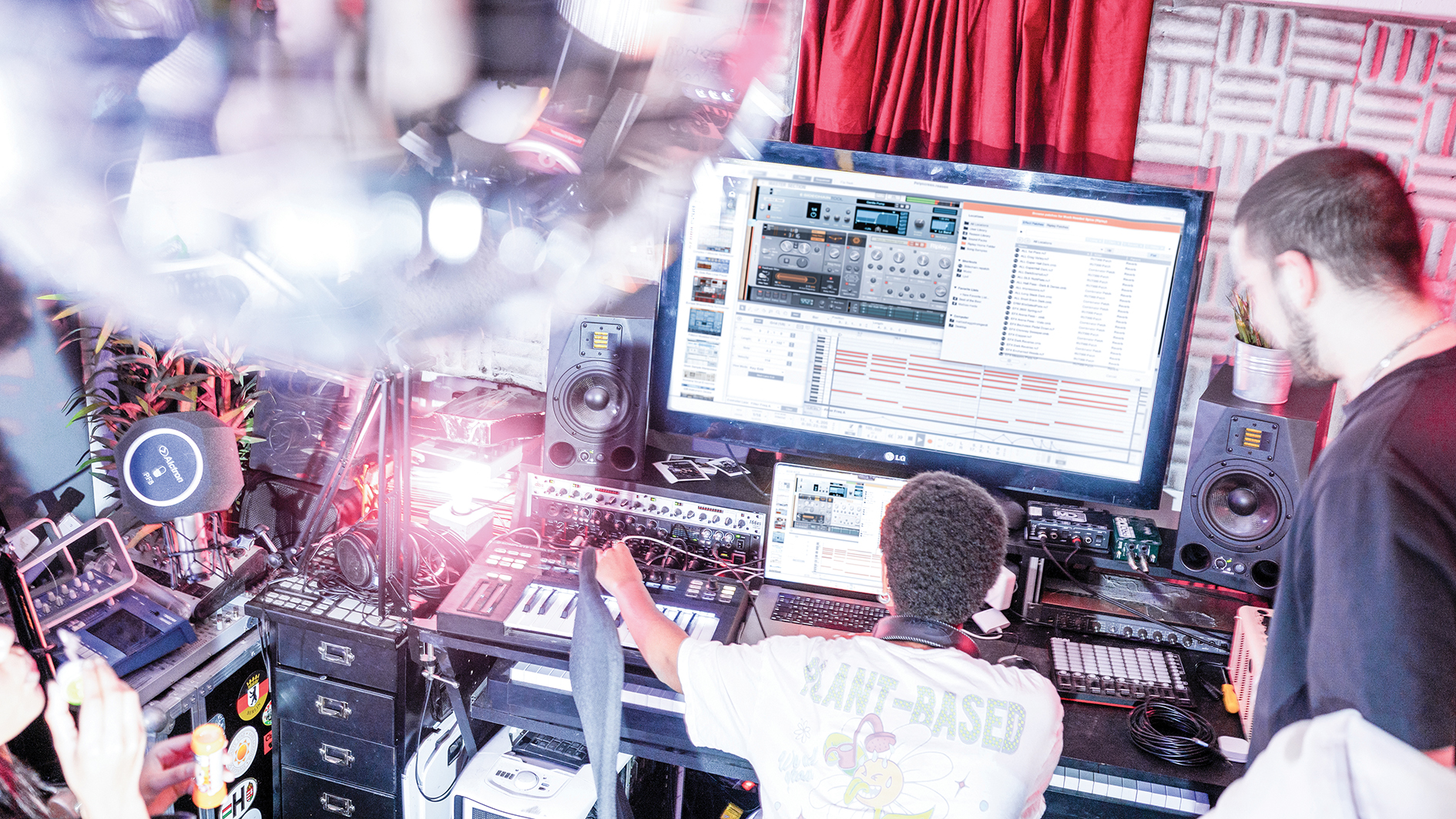
From their groundbreaking mid-’90s releases to the all‑new 13th version of Reason, we speak to the brains behind some of the most important products in computer music history…
Hi there Mattias. There were a whole host of new additions to Reason 13, including its new tagging system and browser, a major sequencer upgrade and the addition of the Polytone synth – not to mention the interface’s visual upgrades. How long has version 13 been in development?
“In terms of how long it’s been in development, that’s a question that depends on what you mean by ‘development’. There’s a lot of planning that goes into making a new version, there have been lots of ideas that have been brewing for a long time in a kind of conceptual approach. We’ve been working on things related to this update maybe for the last year or two.
Half of my job is basically figuring out what people care about
“We realised quite a while ago that Reason is a program that already comes with so much great content, and an issue is that it’s getting progressively harder to find all that content – every new version and every new rack extension piles it up further. We’ve had ideas and prototypes of how to solve that for a long time.”
How much do you canvas your user‑base when deciding what to add to a new version?
“Half of my job is basically figuring out what people care about. There a bunch of ways to do that. One of the most interesting things is not asking but just observing. We spend a lot of time doing interviews with both established users and users from other platforms, but we also spend a lot of time watching people make music with the software. We’ll make notes on what aspects took them a lot of time or elements they were struggling with.
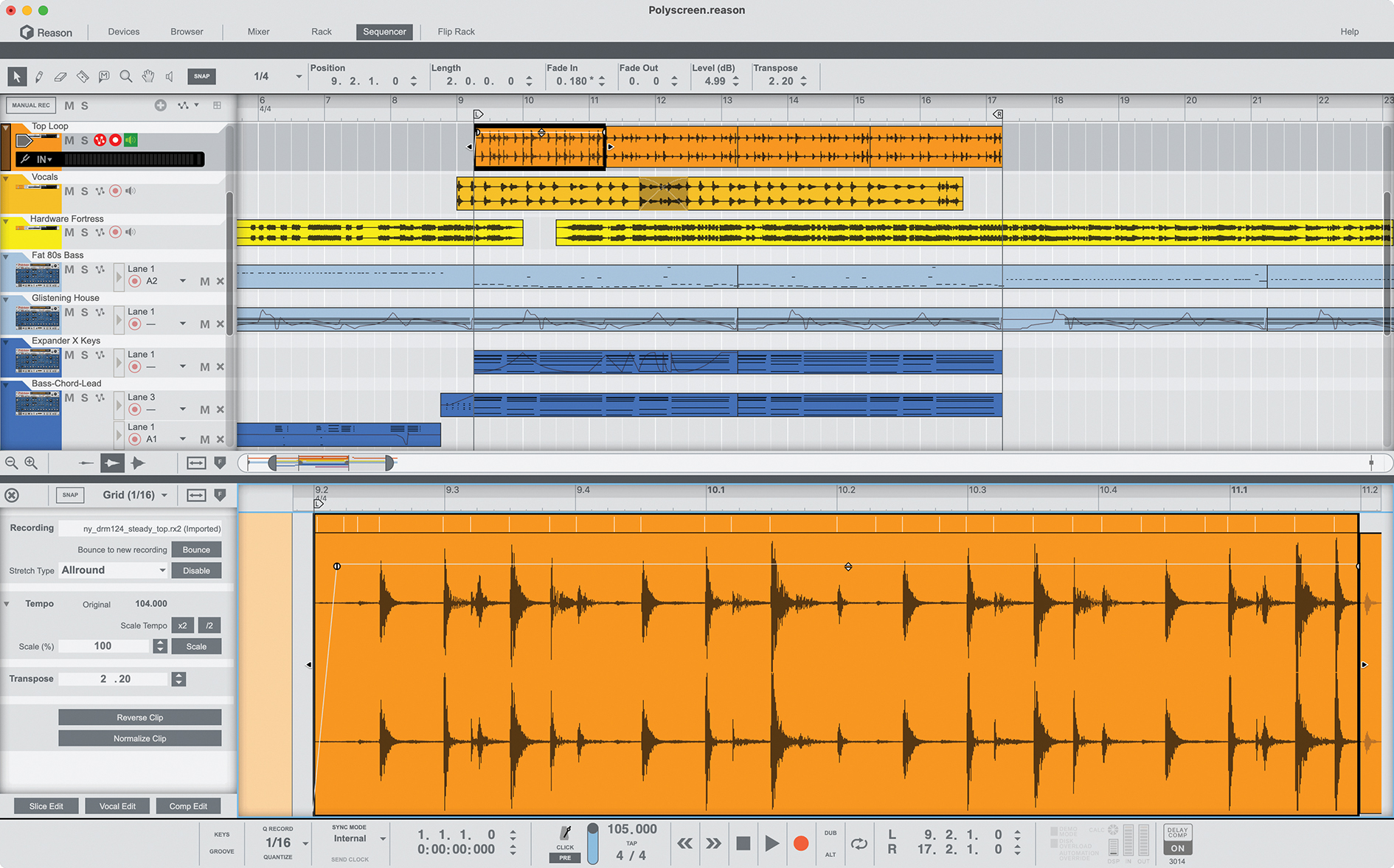
“As a user, you’re sometimes not thinking about the aspects that take time. With the wealth of Twitch and YouTube streaming, we’ve got access to a great deal of people using the software, making music. I spend a lot of time floating around the Reason community, on Reddit and the ReasonTalk forums, KVR and so-on.”
The new synth, Polytone, was based on that original Reason Monotone bass synthesiser – what prompted the team to make that?
“We have a relatively small device team; we have one principal product and UX designer and one principal UI designer under the device Product Manager. Then, generally each project has one developer, who is responsible for all the DSP coding and so-on.
“Working with a small team is actually very good because you can iterate very quickly, you can try things very quickly. Polytone is related to Monotone in terms of focus and usability, that’s what we wanted to do first and foremost, but the code is completely different.
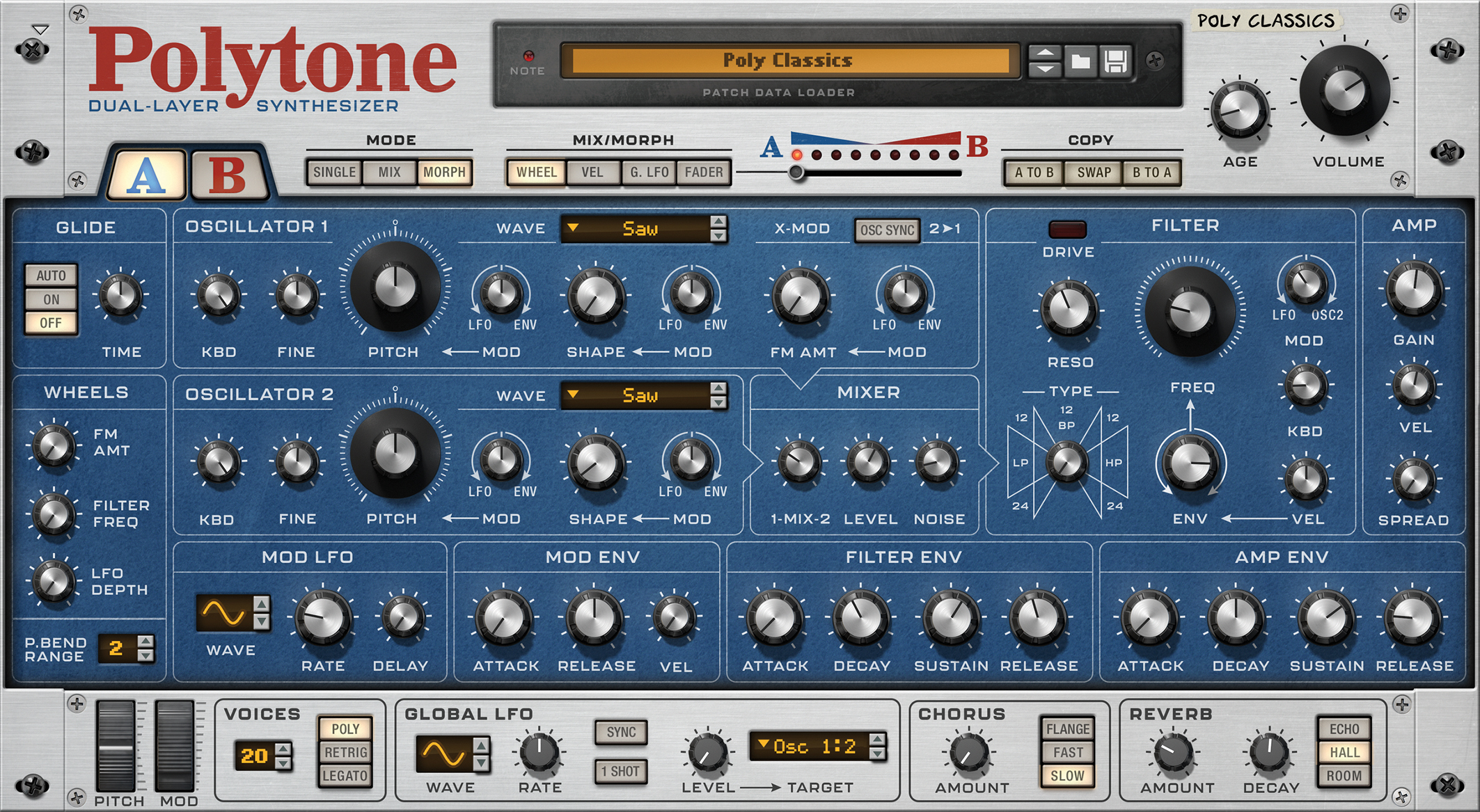
“We’re all synth fanatics here at Reason. All of us agreed that we have really cool and competent synthesisers, but we did not have an ‘instant gratification’ polysynth. Subtractor is fantastic, but it’s also many years old at this point. It has some weird quirks in terms of how it works and how it sounds. We wanted to bring something that instantly grabs, and gives good analogue poly sounds from the outset.
It’s hard to imagine the perfect product and then just build that
“Of course, in the design process we always try to throw in more and more features. Morphing was one of those things. It was never intended to be a morphing synth to begin with, but we really went to town on it. It became a better synth because of it. The more we use the stuff the more we come up with new things. It’s hard to imagine the perfect product and then just build that. It’s usually a case of test, build, test, build…
Reason of course is one of the most pivotal pieces of music production software in history, originating from those foundational releases ReCycle and ReBirth. Reason, for a long time, stood in contrast to the linear workflows of DAWs like Cubase and Logic, opting for the rack-based approach. How do you primarily pitch Reason now, as a standalone DAW or as more of a bolt-on tool (universe!) to expand people’s workflows?
“I think in a way it’s both. One of the big things that I have learned, when talking to so many musicians and producers over the years, is that everyone works a little differently. Everyone has their setup and the way they want to work. You can pick a fight, and say, ‘We’re going to be the next Pro Tools’, or ‘We’re going to be the biggest synth manufacturer’, or something like that.
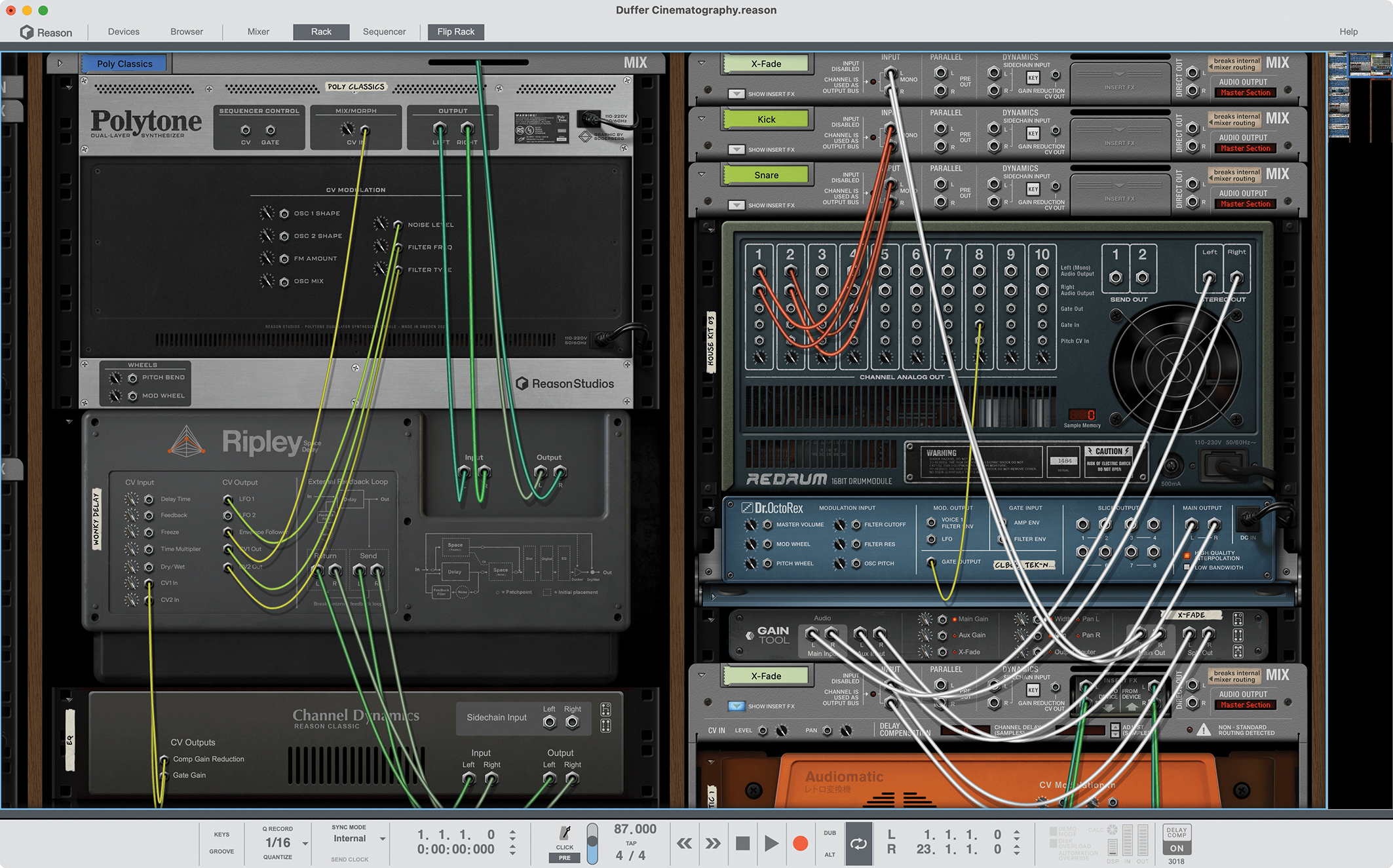
“I just think we’re leaning into what our main strengths are: making instruments and effects that are really good and are unique, they’re not emulations of something. Then, we’re giving people different ways of using our stuff. Whether they’re using Reason as a DAW or as a VST plugin. We want to make sure that however you do make music, you can add some of our magic to it.
Music-making is still supposed to be a joy
“What we really want to succeed with, and what we believe is the foundation of what we do (and what we think music-making is) is getting that creativity going. Music-making is still supposed to be a joy. That’s the very essence of it. It should be fun, you’re doing it to feel something. We focus on that aspect.
“We’re not putting that much effort into things like ‘how do we build the perfect export format for a Netflix documentary’, but then the more I talk to big-name producers the more I learn that having fun is actually the key to good music. Having those instruments and effects, being able to experiment and make cool arrangements and feeling happy with what you’re doing. It’s not always the most well-engineered thing. It’s interesting music.”
The Reason+ subscription route is something that the company launched a few years ago – is this a route you’d recommend for newcomers to the Reason ecosystem?
“I think part of the reason why we did it is that it’s a very good way for someone to get into the Reason world without paying too much upfront. You get access to everything for a really low cost; you also can just take a break if you want. It’s not an investment that you make that you feel like you have to learn it and use it every day. That’s part of why we have a subscription, but we also have a standalone purchase option.
“You can make the choice as to what your preferences are, or what your situation is. It was also a way for us to make more sound content, like combinators and sound-packs. It’s a good way to get it all.”

Reason has had some quite significant upgrades across its various numbered versions; what are some of the most important upgrade milestones?
“I think VST support was big. I’ve been Product Manager ever since version 9. Speaking to those things that I’ve been involved with, I think opening the doors to VST was a very big milestone. I think also becoming a VST and AU was a big milestone, too. Both of those are part of the same thing, people like to use different things together and those moves were opening doors for different ways of doing that. Prior to me taking on the role, I think a big element was the UI – people love the Rack!”
We have our favourite devices and instruments in the Reason toolkit, but what are some of your personal favourite tools, and why?
“I think Objekt is definitely up there for me. It was one of those projects where everyone came out of it knowing that we did something really nice there. It fulfils lots of people’s visions. I personally have composed music for video games for a number of years.
There’s a bit of that magic where you don’t quite know what you’re doing
“Those kinds of sounds that Objekt makes replaces hoarding thousands of sample libraries and tweaking them. It was almost my dream thing, making an engine for these kinds of textures. For the development team, I think it’s a really, really fun challenge. There’s a bit of that magic where you don’t quite know what you’re doing. It prevents you from doing the things you always do.
“Then, I have to say Europa is a big favourite. That was the first device that I got to decide what we were going to make. With 9.5 we added VST support, then with Reason 10 we wanted to make a big built-in content update. The first thing I said was ‘We’re going to need a really powerful, big wavetable synth that does everything you’d expect, but also has some unique and interesting things’.
“Europa is one of those instruments where you look at the surface and might think you know what it does, but then the more you get in and see the different modifiers and spectral stuff, there’s years’ worth of exploration. I really like that in an instrument.”
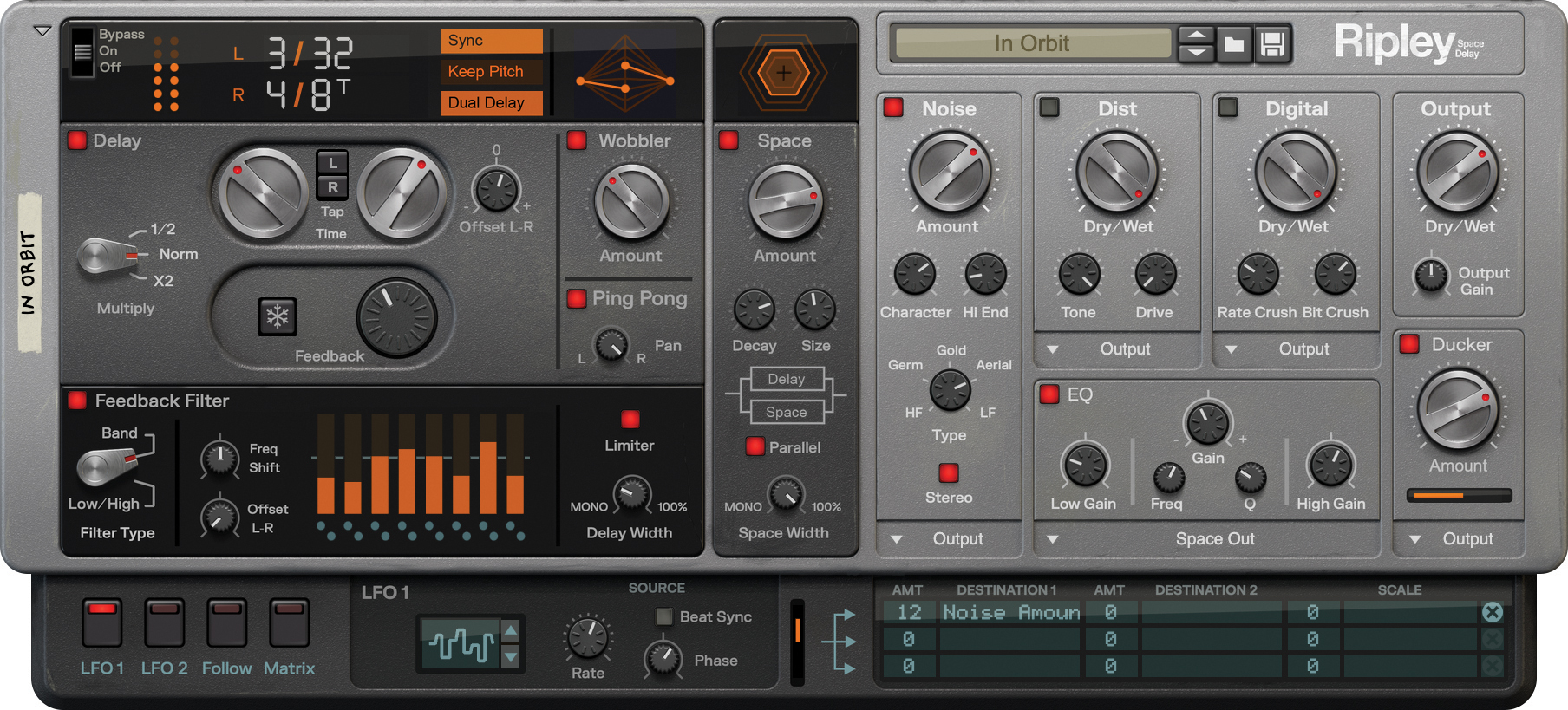
What are your thoughts on the spate of AI-led music production software in the world right now, and how does Reason Studios view AI-based products?
“It’s an interesting question, and I assume it’s a question that everyone is getting! There’s immense promise and also immense fear around AI right now. I don’t think we have any obvious applications at the moment, but as a tech company, we take pride in looking at what technology is interesting right now.
“Of course, we’ll see where AI goes, but there’s no immediate like ‘Oh, finally, it does X’. When we did the tagging and categorisation update for Reason 13, we tried training a machine learning model to see if it could categorise better than what we could do. Back then, we didn’t get it to do anything better than people who understand music could do.
“There’s so much stuff that’s really subjective in music – an AI is pretty easy to train on facts and texts, but is probably pretty hard to train on what sounds good. One of the most interesting things I find is that generative AI that makes complete songs, always seems to have this weird sound to it. It sounds a bit hissy in the high-end. I actually think that’s a cool sound!”
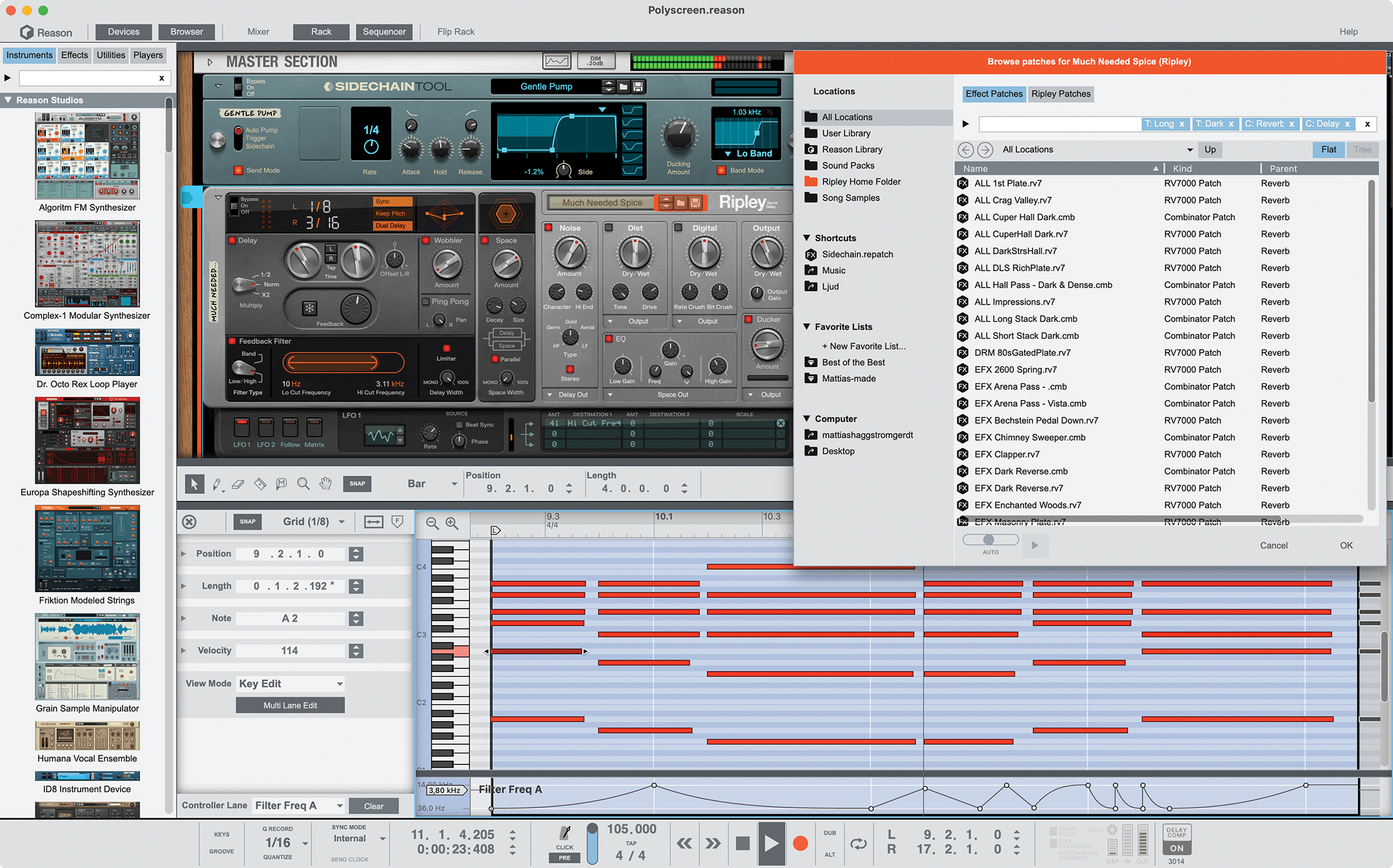
Beyond AI, what are the biggest challenges that a company like yours finds that it faces in the current music technology landscape?
“I think in terms of challenges, it is an interesting, always-moving market. It can be quite trend-sensitive and also quite slow to adapt. I think the challenge of any company like ours is ‘OK, what are we going to do next, and will people like it?’ The only way to really take on that challenge is to keep trying and experimenting. Talking to music-makers – and talking to different types of music-makers.
“I think we do that quite well, often people have their specific slice of audience and it becomes this infinite feedback loop of just listening to that subset of people. I think it’s important to reach all kinds of music-makers, and that’s an interesting challenge. People just starting out today, for example, what do they even think about making music the way we did 20 years ago, how can we improve that while also respecting everyone who spent so much time learning our tools?
We believe that a big part of music-making now isn’t just writing the song, the lyrics, the chord structure. It’s about finding your sound.
“We really do believe we have truly amazing products, both if you use Reason as a DAW or if you use just some of the instruments. It’s always a challenge in the sea of possibilities to say ‘Try this!’ We believe that a big part of music-making now isn’t just writing the song, the lyrics, the chord structure. It’s about finding your sound.
“Songs can have the exact same chord structure and melody, but depending on how they’re used and what sounds are used and what interesting production techniques are used, they can be amazingly different. It’s a big power reminding people that it’s incredibly fun trying to find that sound.”
What was the need for the change of company name a few years ago, from Propellerhead Software to Reason Studios?
“The reason was to align ourselves better with the core software. The only people who knew that Propellerhead Software was the Reason parent company were the real hardcore users. Some Reason users didn’t even know us. I think we just wanted to show that that was our focus and that was what we’re working on. It’s always hard to change, I guess, but we’re really happy with it. It really shows what we’re about.”
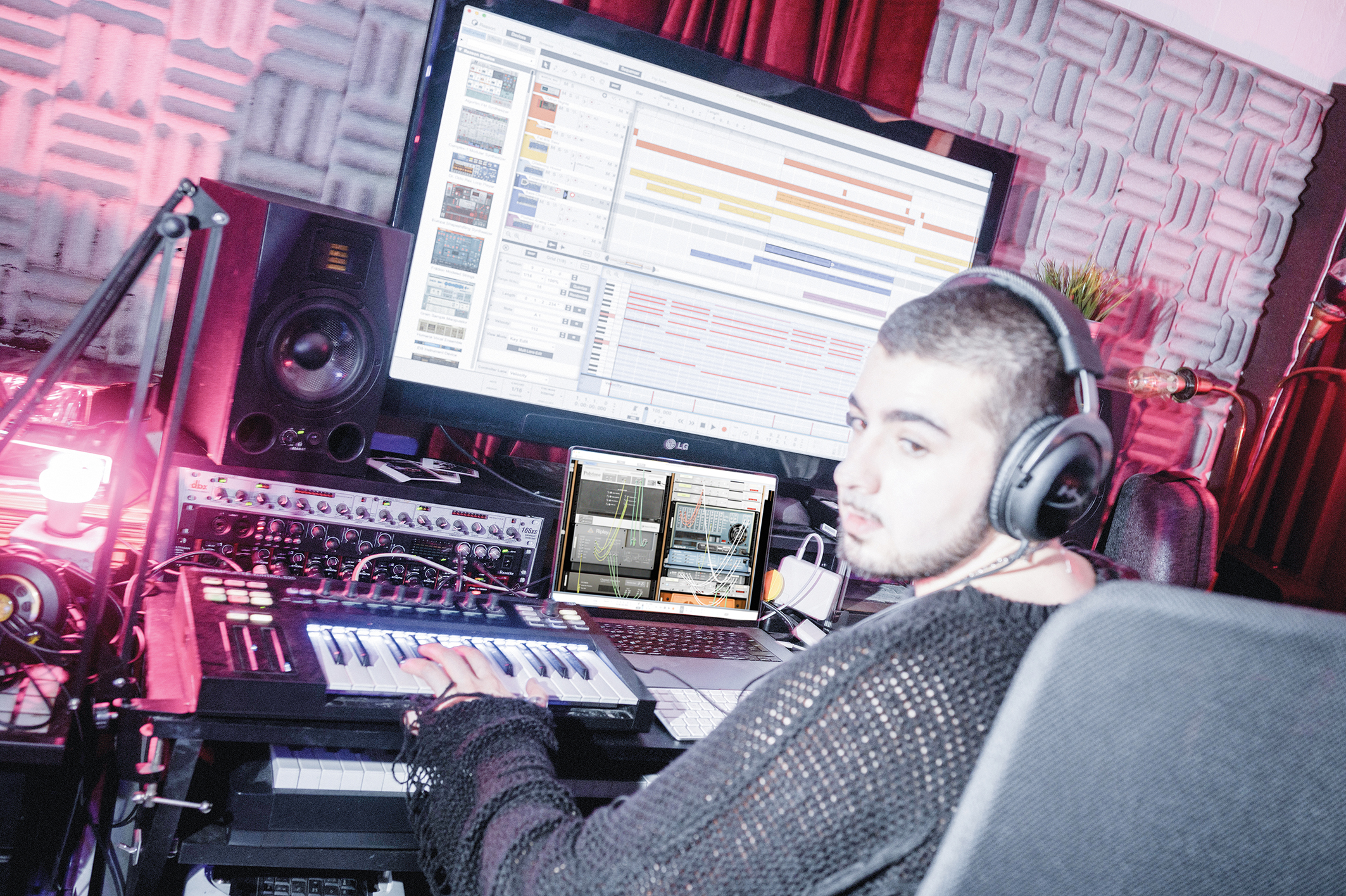
Right now, is there anything you think you can confidently say that Reason is able to do, that other DAWs just can’t do (or something that it does exceptionally well, compared to other DAWs)?
“I think ‘exceptionally well’ is what I’d say. It’s interesting the ‘can do’ vs ‘can’t do’. These days, I think most DAWs can do most things you need – in fact, way more than you need. I don’t even see it as a battle. It’s more how you work. One of the things that Reason is really good at (and we hear this from our user-base) is that it is really great for going from nothing to an idea fast. Going from a blank canvas to a great-sounding start for something.
“I think part of it is that we’ve really taken the time to try and make the creation workflow as fast as possible. You just drag instruments into the Rack, you make some patches, you do those combinations – stacking Players. There’s so many choices built into those instruments and effects, too. The speed factor is crucial. We excel at that. I know people who use Reason exclusively, and I know people who just start all their productions in Reason, then they move somewhere else. They start there because it’s so quick.”
How do you see Reason developing over the next decade? Do you want to expand its feature set to incorporate more applications (like video/spatial audio) or keep it focused on music‑making?
“I think we’ll always expand the feature-set, but we’ll expand the feature-set when it makes sense to make stuff better. We’re not the kind of company that adds a feature just because it’s a feature that needs to be ticked off a list somewhere. There will be plenty more features in Reason, but not necessarily every feature you might see elsewhere will come to Reason, just because it ‘should’ be done. We’re going to be picky. It keeps it workable, I think. Add too much and it just becomes clumsy.
“When you buy Reason, you automatically get the Reason Rack plugin and the DAW; there’s no difference. We thought that we’d have half using only the DAW and half using only the plugin, and never the two shall meet. That wasn’t the case – we have a lot of people who make one project in Reason standalone, and then they use it as a plugin. People have been really fluid that way. I think that’s both fun and interesting.”
